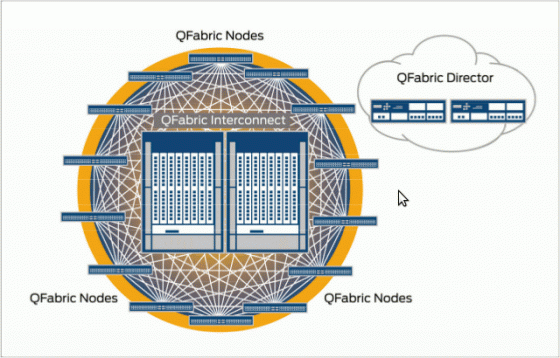Enterprise Clouds – the Next Evolution of Cloud Data Centers
Over the last few years, cloud computing has rapidly grown from an untested technology paradigm to a reliable, scalable, and economical hosting solution for many businesses. The next step in the evolution of cloud computing is implementation of cloud architectures in enterprise data centers.
Cloud Data Centers – Not Just for Service Providers Anymore
The early adopters of cloud computing technologies were service providers: cloud hosting companies, Internet service providers (ISPs), and application service providers (ASPs). These companies invested heavily in early-stage cloud technologies and earned their investment back through monthly fees paid by their customers.
The customers of these service providers benefited from the low-costs, rapid scalability, and high reliability provided by cloud computing. Many customers and applications, however, were not a good fit for migrating to a service provider network. Customer facing applications which are primarily accessed via the public Internet are the perfect business case for cloud computing. Large data-centric applications involved in manufacturing, enterprise resource planning, accounting, and human resources are poor applications for service provider hosting. These applications work with large volumes of data which is traditionally stored in the same data center. There is little business justification in moving this data away from the enterprise data center and to a service provider cloud.
There are, however, good reasons for moving cloud technologies to the enterprise data center. Implementing a cloud data center architecture can enable enterprises to achieve the same benefits in their own data centers as their service providers currently enjoy – scalability, reliability, and cost efficiency.
Traffic Flow Has Changed and Data Center Network Architecture Must Change With It
Service Oriented Architectures (SOA) and virtualization have placed new demands on data center networks. Not only is traffic volume more than doubling every two years, but the paths of that traffic flow has changed. The highest traffic growth in most enterprise networks is in server-to-server traffic from SOA applications running on virtualized servers. This increased level of “any-to-any” traffic flow breaks the design paradigm of traditional multi-tier data center network architectures. Those architectures were designed with the expectation that most traffic would flow in orderly patterns through the access layer, aggregation layer, and core layer. Modern any-to-any traffic pushes more traffic through the core and aggregation layers, overloading traditional network architectures and driving the need for new ways to think about network design.
 The next generation of data center network designs is the fully-meshed fabric network. In a fabric network design,routing decisions are centralized in a redundant set of network directors. The network directors make the routing decisions, but do not actually move traffic themselves. Traffic flow occurs through a high-speed fabric interconnect device which acts as a shared network backplane. Fabric nodes connect to the interconnect device to reduce cabling costs and provide local switching where that is optimal.
The next generation of data center network designs is the fully-meshed fabric network. In a fabric network design,routing decisions are centralized in a redundant set of network directors. The network directors make the routing decisions, but do not actually move traffic themselves. Traffic flow occurs through a high-speed fabric interconnect device which acts as a shared network backplane. Fabric nodes connect to the interconnect device to reduce cabling costs and provide local switching where that is optimal.
The fabric network architecture enables data centers to reduce the number of network devices, which reduces the costs for power, cooling, and maintenance for those devices. In addition, the centralized management of the fabric network decreases the costs of change management, configuration management, and problem management. ACG Research estimates that upgrading to a fabric network will lower the Total Cost of Ownership (TCO) for an enterprise data center network by 58% to 76%. Juniper Networks maintains a learning center for people interested in fabric-based data center network architectures that explains these concepts in more detail.


Comments - One Response to “Enterprise Clouds – the Next Evolution of Cloud Data Centers”
Sorry but comments are closed at this time.